The Government of India has launched a GST portal. It enables taxpayers to complete the tax processes online. The platform allows handling everything related to Goods and Services Tax. It saves time and provides technical support so the payer does not need to visit the tax offices.
The GST portal is easy to handle. It helps taxpayers to file their GST returns without professional help. In this article, we will cover the GST Portal in India in detail forms. You will learn much from this article, so keep looking forward to the end.
About GST:
GST stands for Goods and Services Tax. It is a comprehensive indirect tax system implemented in many countries worldwide, including India, Canada, Australia, and others. With a single unified tax system, GST replaces multiple indirect taxes, such as sales, service, excise duty, and value-added tax (VAT).
The primary objective of GST is to create a simplified and transparent tax structure that promotes economic growth and reduces tax evasion.
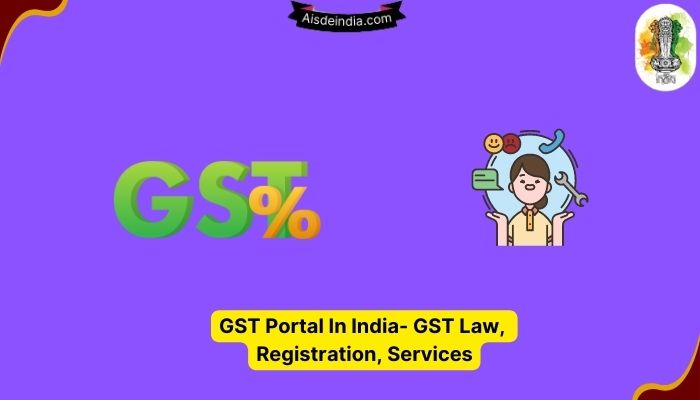
The GST system categorizes all goods and services into different tax slabs based on their nature and value. These tax slabs determine the rate at which GST is levied on the sale or provision of goods and services.
The tax is collected at each stage of the supply chain, from the manufacturer to the retailer and ultimately to the end consumer. This ensures that the tax burden is shared equitably among all participants in the supply chain.
GST has several advantages. It eliminates the cascading effect of taxes, where taxes are levied on taxes, leading to a higher overall tax burden. It simplifies tax compliance for businesses by providing a single platform for filing returns and claiming input tax credits. GST also promotes a more efficient allocation of resources and fosters a common market by removing barriers to interstate trade.
The implementation of GST has significantly impacted the economies of countries that have adopted it. It has boosted tax revenues, enhanced business efficiency, and stimulated economic growth.
However, the effectiveness of GST depends on its proper implementation, including robust technological infrastructure, effective tax administration, and regular updates to the tax structure based on evolving economic needs.
Overall, GST is a comprehensive indirect tax system that aims to simplify and streamline taxation while promoting economic growth. It replaces multiple taxes with a single unified tax structure, ensuring transparency and equitable distribution of the tax burden.
What is the GST Portal?
The Indian government has launched GST Portal, and its official website is https://www.gst.gov.in/. You can access your consent GST details once you register and complete the login process. Users can use this portal to register their taxes, file returns, make payments, and apply for a refund. The user can also cancel the registration and access various GST-related analyses.
Taxpayers can clarify their doubts about GST using this portal. They also receive important announcements or Government notices. This portal allows users to respond to such intimations. This portal motivates taxpayers to file taxes on their own. The user is free from professional help.
What does the GST e-way bill mean?
- You can access the e-way bill system or use the portal, i.e., https://ewaybillgst.gov.in/. When carrying products from one location to another, carriers must carry an electronic bill, also known as an e-way bill, if the shipment’s value exceeds Rs. 50,000. It is a record that tracks how the GST law moves items.
- To assign a different e-way bill number to each invoice, the e-way billing system generates all e-way bills. This e-way bill is used by the transporter, recipient, and supplier to move the items from the point of origin to their destination within the e-way bill’s validity term.
- Before the introduction of GST, e-way bills were produced in each state, but since then, e-way bills have become widespread throughout all states and Union Territories.
Services Provided In the GST Portal:
Here are the various services provided in the GST Portal:
S.No | Services On the GST Portal |
1 | Accessing various Transition Forms (TRAN-1, TRAN-2, TRAN-3) |
2 | Application for registration for normal taxpayer, casual dealer, ISD |
3 | Facility of filing GST Returns |
4 | Online GST Payments |
5 | Claiming return for the excess GST paid (RFD-01) |
6 | Application for GST practitioner |
7 | Availing Composition Scheme (GST CMP-02) |
8 | Opting out of Composition Scheme (GST CMP-04) |
9 | Intimation of stock for Composition Dealers (GST CMP-03) |
10 | Filing Table 6A of GSTR-1 for Export Refund |
11 | Furnishing Letter of Undertaking (LUT) (RFD-11) |
12 | Viewing E-Ledgers |
Steps to Register on GST Portal:
Follow the instructions to complete the registration process successfully.
- Step 1: Click on www.gst.gov.in
- Step 2: Scroll down to ‘GST Practitioners.’ Then click on ‘Register Now.’
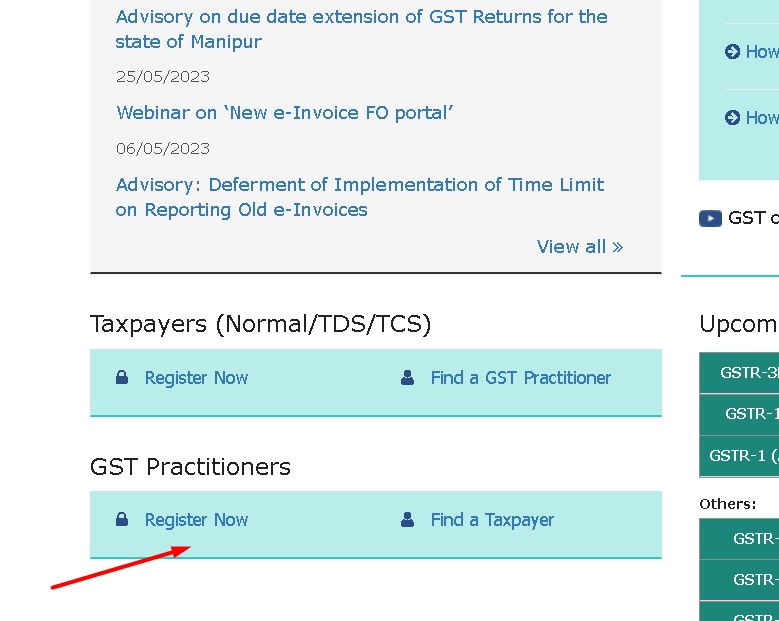
- Step 3: Then, on the next page, fill out the details of the form and proceed.
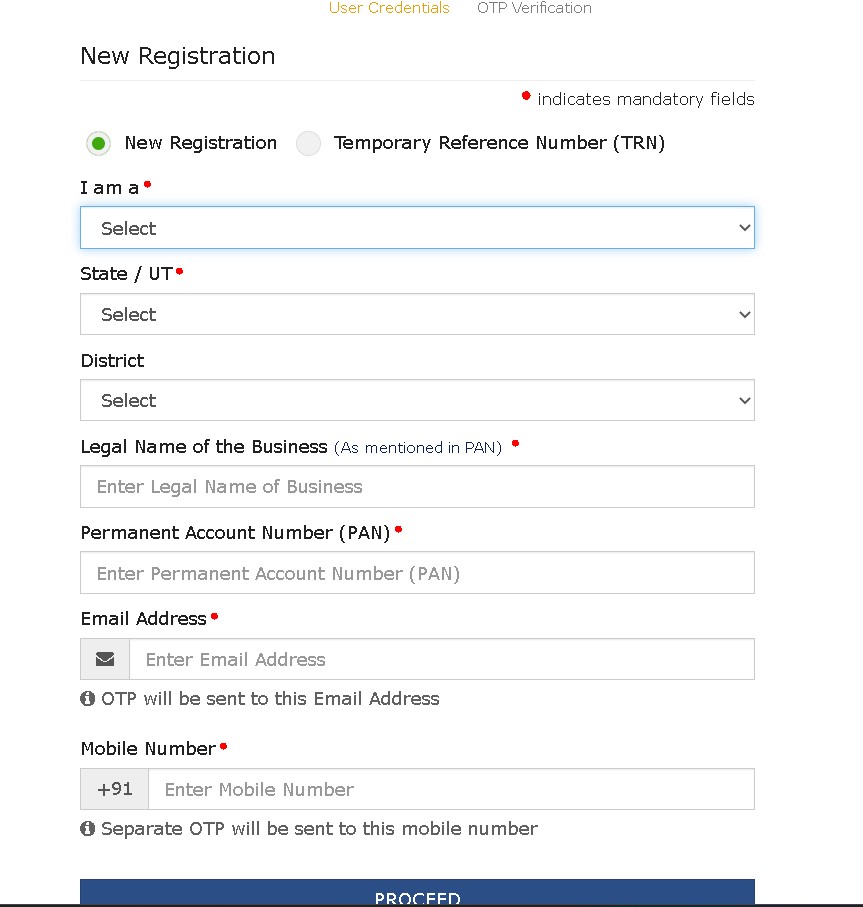
How To Login to the GST Portal?
- Visit www.gst.gov.in and click Login on the right corner of the GST website homepage.
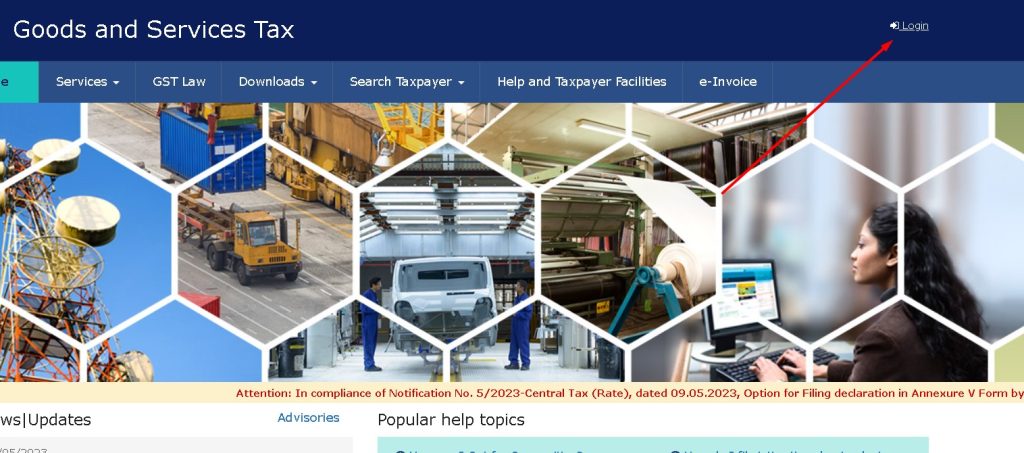
- After Logging in, Enter the details such as Username, Password, and Captcha code and click on Login.
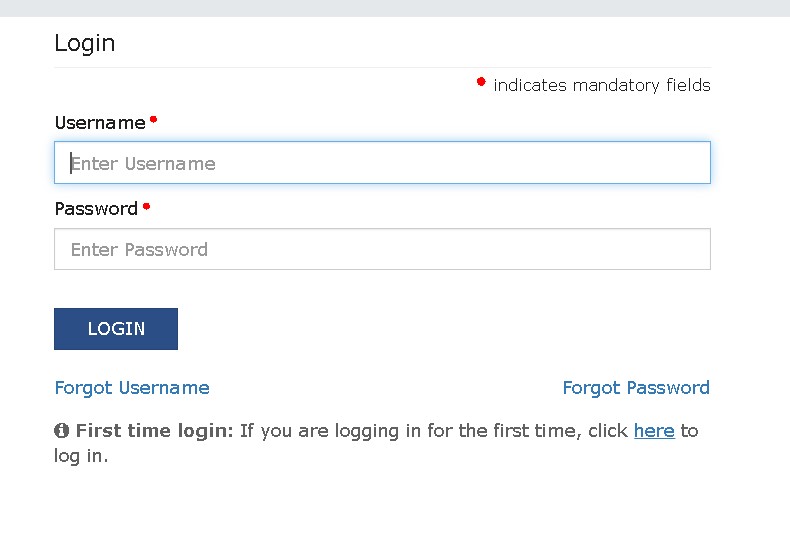
- Now you can see your dashboard. you can view options like Notices, GST Payable, and Return filing options.
- If you are a new user, click ‘here’ against ‘First Time Login.’
- Then provide your Provisional ID, User ID, GSTIN, UIN, or GSTP ID, followed by your password, and click ‘Login.’
How to Track Registration Application Status?
- Visit the GST official website.
- Under ‘Services,’ select ‘Registration’ and then click on ‘Track Application Status.’

- Select ‘ARN,’ enter the ARN number, and click ‘Search.’
- Follow the instructions to view the status of your registration application.
How To File For Cancellation of GST Registration in Portal?
- Visit the official website of GST, i.e., https://www.gst.gov.in/.
- Click ‘Login’ and enter your User ID and Password to login.
- Click on ‘Services.’ Then click ‘Registration’ and ‘Application for Cancellation of Registration.’
- Provide your address and click on ‘Save and Proceed.’
- Select why you want to cancel your GST registration and then click ‘Save and Proceed.’
- Check the verification statement and provide the relevant details as required.
- Verify the details using your Digital Signature Certificate (DSC) or the EVC option.
- Once you submit the form, you will receive the generated ARN number. You can use it for future reference.
Who Should Register And Login For GST?
As per the GST law, the following individuals are required to be registered under the regime of the taxation system:
- Before GST, individuals registered under different taxation systems (VAT, Excise Duty, Service Tax, etc.).
- All e-commerce aggregators.
- Businesses across India with an annual turnover of more than Rs.40 lakh.
- Businesses in North-Eastern India, Jammu and Kashmir, Uttarakhand, and Himachal Pradesh have an annual turnover of over Rs.10 lakh.
- Input service distributors.
- Agents of suppliers.
- Casual taxable person.
- Non-Resident taxable person.
- Individuals who pay tax under the reverse charge mechanism and so on.
Pre-Login Details Of GST Portal:
The home page of the GST online login Portal contains the following sections:
- Home
- Services
- GST Law
- Downloads
- Search Taxpayer
- Help and Taxpayer facilities
- e-Invoice
Services:
For an individual or business whose turnover is above Rs.20 lakh, registration under GST is mandatory. The ‘Services’ section contains the following tabs:
- Registration
- Payments
- User Services
- Refunds
- e-way bill system
- Track Application Status
Registration:
A taxpayer can apply afresh through this page’s ‘New Registration link. The taxpayer can track the status of GST Registration. One can also submit an application seeking clarification. Get clarity on GST filing-related issues through the sub-menus given on the page.
The ‘Track Application Status’ link will redirect the user to a new page. One can check the GST Registration application with the help of the ARN number.
Payments:
Click the ‘Payments’ sub-menu. The taxpayer can access ‘Challan Creation’ and ‘Track Payment Status’. It will help him/her create a challan and track the payment status as a part of the online GST payment system.
User Services:
The ‘User Services’ sub-menu shows several links. The taxpayer can view office addresses, generate user ID for advance ruling. One can also view holiday lists, file grievances/complaints, locate GST Practitioner, etc. Click the ‘Contact’ and ‘Search Office Addresses’ tabs. Search and find the contact details of various central/state-level tax officials. One can also find addresses of local GST offices.
Refunds:
The ‘Track Application Status’ redirects the taxpayer to the page. Here one can also track the status of the refund application if the filing already exists.
E-Way Bill System:
The ‘E-way Bill System’ section helps taxpayers navigate the e-way bill portal. The user can also access the user manual and FAQs on the e-way bill portal.
About GST Law Portal:
Under the ‘GST Law” (https://services.gst.gov.in/services/gstlaw/gstlawlist) tab, the Acts and Rules associated with GST are available for download. The taxpayers can access the recent circulars, amendments, and notifications. Access anything related to GST under this section on the GST portal.
- Download:
On the GST portal, there are two options available under the ‘Downloads’ category:
- Offline Tools
- GST statistics
- Search Taxpayer:
Under this tab, one can search for a taxpayer’s GSTIN or PAN to verify the taxpayer’s details. One can search for a composition taxpayer who has Opted In or Opted out of the scheme. One can access this feature before and after logging into the portal.
- Help and Taxpayer facilities:
On the GST portal, there are four options available under the ‘Search Taxpayer’ category:
- Search by GST/UIN
- Search by PAN
- Search Temporary ID
- Search Composition Taxpayer
GST- Important Dates:
It allows the user to see all the important dates related to GST return deadlines for the year. One can view the upcoming monthly and quarterly GST return filing due dates. Moreover, the taxpayer can refer to the updates if there are any changes in the notified dates.
GST- News And Updates:
Under this section, the taxpayer receives regular updates on GST. It includes changes in due dates or changes in GST processes, etc.
Post Login Details Of GST Portal:
After the login process, the taxpayer will get access to certain new services on the home page. Here are the sections that one can view on the GST portal’s main page post-login:
The ‘Dashboard’ section appears immediately after a taxpayer logs in to the portal. The user can check all notices and orders, edit the profile, and file GST returns on this page. Under this section, the tax challan preparation occurs.
I. Registration:
Under the ‘Registration’ tab, the portal provides other services like Post Login. One can access,
- New Registration
- Amendment of Registration Core Fields
- Track Application Status
- Application for Filling Clarification
- Amendment of Registration Non-Core Fields
- Application for Cancellation of Registration.
II. Ledgers:
Under the ‘Ledgers,’ the user will get four options.
- Electronic Cash Ledger
- Electronic Credit Ledger
- Electronic Liability Register
- Payment towards Demand
III. Returns:
This tab provides the user with five different options. One can view the returns dashboard and e-Filed returns. And track the return status, if any, and access the Transition Form. The users are also offered access to the ITC Forums under this tab.
IV. Payments:
The ‘Payments’ section consists of 5 different options. The taxpayers can create challans and view the saved challans. Get access to challan history. File the applications for deferred payment or payment in installments. He/she can also view the installment calendar.
V. User Services:
Under this tab, the taxpayer can find several functional facilities, such as,
- Checking the saved applications
- Viewing/downloading certificates
- Viewing the holiday list
- Searching for contacts of GST officers and offices
- Filing grievances/complaints, etc.
VI. Refunds:
‘Refunds’ is the last sub-menu under the post-log in the ‘Services’ section. The user can apply for refunds and check the saved or filled application. One can track the application status if he/she has filed for GST returns. The user can also track the status of invoice data to share it with ICEGATE.
The GST India login official portal is well-organized. It helps taxpayers pay their taxes without any hassles. This portal provides FAQs where one can visit and find the queries asked by other taxpayers.
Frequently Asked Questions:
A. Various documents will be required Depending on the type of GST registration obtained or the business constitution. You must submit documents such as your PAN, Aadhaar, bank account information, address proof, digital signature, etc.
A. Visit the GST login page at gst.gov.in and select the ‘Login’ option in the top right corner. Click “click here to login” to log in as a new user under the “first time login” option. Next, log in to GST using the assigned ARN and password sent to your email address.
A. You must log in to download your GST certificate. One must log in to the GST portal to access and download the certificate.
A. You can log in to your GST portal using your credentials and navigate to the ‘Service’ section. Under the ‘Service’ section, click the ‘Amendment of Registration’ option and make the necessary changes. Once the changes are made, you must validate the same using the OTP sent on your registered mobile phone number and email ID.
Conclusion:
In Conclusion, the GST Portal login is a crucial component of the Goods and Services Tax system, providing businesses and taxpayers with a secure platform to fulfill their tax-related obligations.
It enables seamless filing of returns, claiming input tax credits, and accessing relevant information, streamlining the GST compliance process effectively.
